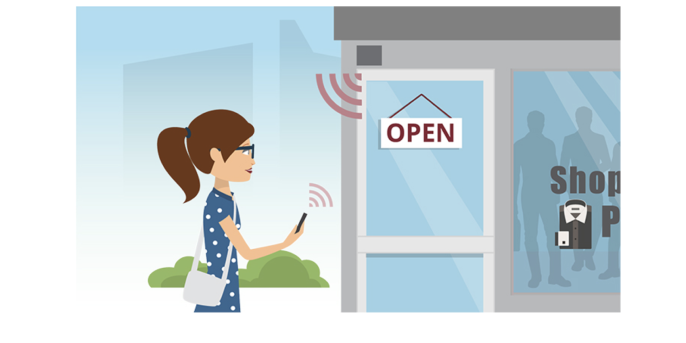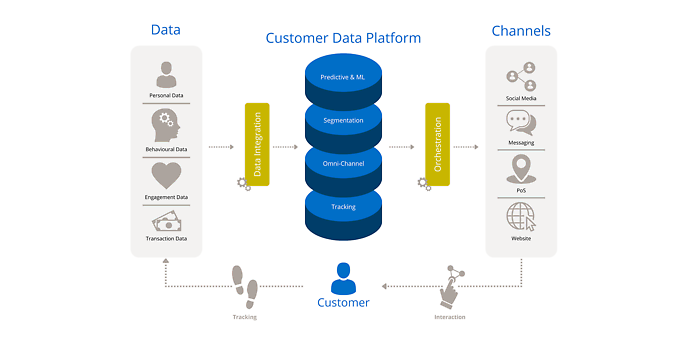30. September 2022 By Heike Heger
Omnichannel commerce versus unified commerce – and the types of commerce in between
It is all about commerce these days. B2B, B2C, B2B2C – sometimes even B2E and B2G. But the focus has moved away from the target groups and more towards the forms of commerce. Here we have the same problem again – we use these terms, but do we know what they actually mean? Do we know what we need when it comes to sales and marketing? Does one now exclude the other or do the forms of commerce I mentioned before still have their place? Let us take a closer look...
Content-driven commerce – or: content commerce
This is not about just content used to sell products and thus making it related to commerce by default. Rather, content-driven commerce is about providing perfect support throughout the entire digital customer journey – sometimes long before and often long after a purchase has been made either offline or online. As German online magazine contentmanager.de puts it in its blog post ‘Content and commerce – what belongs together, grows together’ (Content und Commerce – Es wächst zusammen, was zusammen gehört), ‘customers must be able to access the content they need, when they need it, at any digital touchpoint from the moment they become aware they have a need for a product, to the idea of choosing the product, to actually purchasing and using the product.’
Consumers first see products they might want to buy in any number of places, be it Instagram, Facebook or TikTok, a Google search or customer experience blog, a comparison portal, test report, marketplace or supplier website, before they then move on to one of the countless channels to make their purchases. And the content always appears with channel-related content commerce that is tailored to the individual consumer but yet is still consistent and seamless. Marketing professionals know that achieving this not only requires a well thought-out content commerce strategy, but also the right technology to implement it, such as a Digital Experience Platform (DXP). adesso partner Crownpeak (formerly E-Spirit) names the five key benefits of having a content-driven strategy in its blog post:
- 1. Brand differentiation
- 2. Improved findability in search engines
- 3. Greater success in a new buyer’s journey
- 4. Improved utilisation of the company’s knowledge resources
- 5. Increased customer loyalty (turning customers into true fans)
In short: content-driven commerce is a powerful element in acquiring and retaining customers by using content-based targeting along the entire customer journey. And that is why content-driven commerce is without question incredibly important in marketing.
Composable commerce
Gartner first coined the term in 2020. My colleague Laura Schöning describes it as follows in her blog: ‘Composable commerce is an IT infrastructure in which some but not all business applications are covered by a single system. Instead, a suite of software components optimally suited for digital commerce are selected, which can then be used to create a custom application out of any combination of modules.’ So it is a best-of-breed approach? Yes, exactly. Marketing platform OMR also confirms this in its blog, in which it describes composable commerce as follows: ‘At its core, it is about optimising your customer experience architecture by using multiple components, not just complete systems. Instead, several powerful individual solutions are put together to suit your company. This means you build your customised system landscape using the best industry solutions to meet the requirements you need to manage.’
Composable commerce has multiple advantages:
Only the best with best-of-breed
While large monoliths usually excel in one aspect but lack in others, with composable commerce, you literally get only the best of each product – in other words, the solution that best meets the requirements of the experts.
High performer
The fact that the respective systems are ‘lean’ means that they can also perform significantly better than complex systems and are thus faster and more agile to use.
Agility and flexibility
Requirements can change. And when they do, so do the solutions. This often becomes difficult to deal with in an inflexible system landscape – but that is not the case in a modular system landscape. Here, a single system is replaced quickly, agilely and without having a serious impact on the rest.
Security and manageability
No matter what you have to do, be it perform an update, make adjustments, react to system failures or assign system access rights, everything is easier to manage when you are dealing with smaller, distinct solutions instead of large, complex systems. The composable commerce approach means you are always looking at solutions on an individual level and it is quicker and easier to solve challenges, regardless of what they may be. Plus, it is also much faster to train employees than it is with a complex system or suite.
Costs
Imagine you are in a restaurant. Do you order the large mixed grill (even though you only like half of the things that come with it) or do you order exactly what you want and avoid wasting half a plate of food? This is also how it works with composable commerce. You can also make significant cost savings here by focusing exclusively on the solutions that are important and relevant to you – or at least align the costs as close to the benefits as possible.
In short: if companies are to keep up with the really big players in the market, they must have the capacity to be extremely flexible when they react to constantly changing market conditions. Composable commerce is the relevant and successful strategy for marketers.
Omnichannel commerce
Customers have expected to be able to shop and use all kinds of services at every one of their touchpoints for some time now. We as marketers use this expectation to guide the information we provide and the products and services we sell. The only thing we are interested in is working out how to create consistent shopping experiences across channels, languages and countries. How can we optimise our purchase processes so that customers view them as an ‘easy and enjoyable’ experience? And how do we increase our conversion rates and sales figures?
Our answer to this is omnichannel commerce. The Gabler business encyclopaedia defines this as follows: ‘Omnichannel management, omnichannel retailing or “omnichannel sales” refers to the synergetic planning, management and monitoring of the numerous sales channels and customer contact points (“customer touchpoints”) available in order to optimise the customer experience and the company’s success across the various sales channels and process steps. Customers can switch between the different channels (brick-and-mortar shops, online, mobile, call centre, social media, catalogues) at any time. Channels and brands interact with each other. Customer touchpoints are a sequence of direct or indirect points where the customer comes into contact with a brand or company (including retailers).’
At adesso, we also regularly ‘take the pulse’ of our business customers as part of studies, such as the CX study 2021. Year after year, we find that it is a constant data-driven process of listening and understanding. And with all the strategies – online, offline and best of all end-to-end – there are always GAPs between what customers want and what companies (can) offer.

Already an adesso (ARITHNEA) theme at DMEXCO in 2016: The Lisa showcase for end-to-end omnichannel commerce
There is another strategy that has been attracting more and more attention for some time in omnichannel commerce:
Unified commerce
Unified commerce is by its very definition the next evolutionary stage of omnichannel strategy. The reason for this is that marketing and sales departments are no longer asking which channels they need to use. The order of the day is to use as many channels as possible – and to do so as efficiently as possible.
The aim of playing to customers in a kind of endless loop in a personalised and, above all, continuous manner is proving to be very successful in practice. Market research company Gartner is of the opinion that just using unified commerce alone can increase a company’s sales volume by at least 20 per cent by 2025. It is therefore all the more understandable that having a holistic overview of the customer journey across every channel is critically important to this.
This consistency is achieved by integrating the communication channels on a single platform. Consistently managing the entire customer experience across every physical and digital touchpoint is something that omnichannel commerce cannot provide.
In short: unified commerce is the order of the day for providers when it comes to seamlessly linking every online and offline (brick-and-mortar shops) channel and thus ensuring that customers can switch between any channel, when they want, without any disruptions.
If you want to read more about unified commerce, take a look at the blog post my colleague René El Fatuaki has written on the topic.

Unified commerce controlled via a customer data platform
Conclusion
Our deep dive into the types of commerce shows that numerous approaches have developed in recent years to successfully support the customer journey. All of the four types I have mentioned – when considered on their own merits – fully warrant their place. If the goal is to stay competitive by putting customers at the centre and coordinating every channel around them through a single platform, then the unified commerce approach is preferable to omnichannel commerce. It is in this context that composable commerce comes into play with its best-of-breed approach.
Do you have any questions? Then feel free to get in touch with me.
By the way, visit our website to find out why digital commerce is driving every industry.
You can find more exciting topics from the adesso world in our blog articles published so far.

